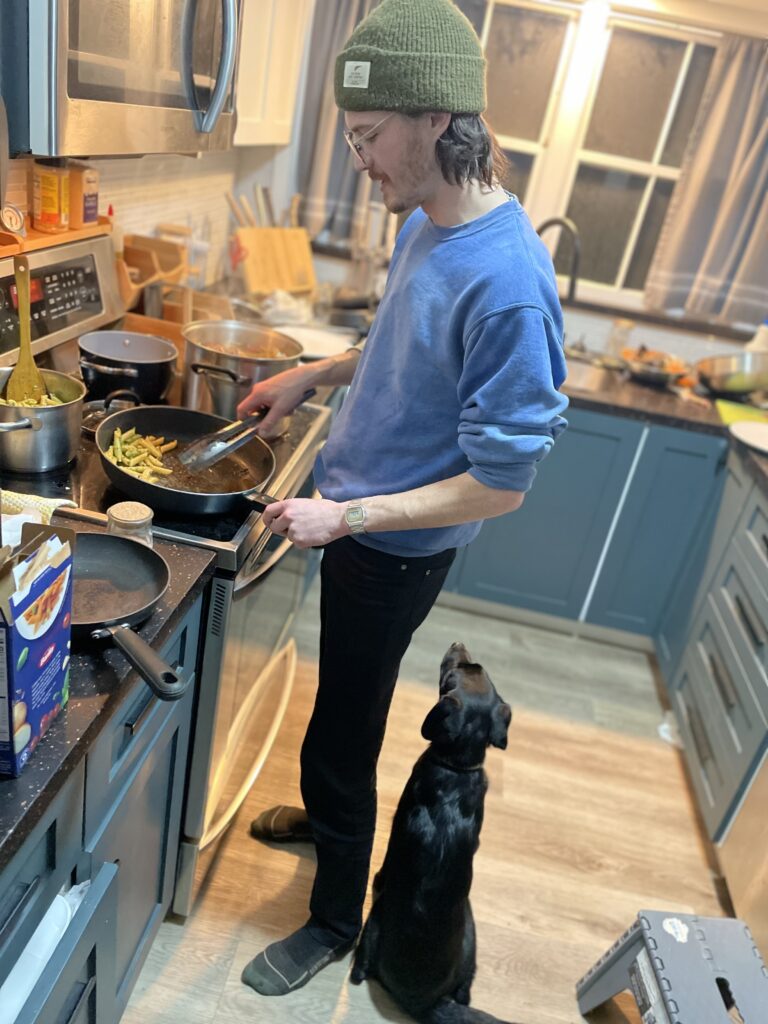A few months back, I incubated a small number of duck eggs hatched from my personal flock, and dispersed them between two of my friends.
Ducklings are notoriously difficult to sex, and even after consulting many educational sources, Joe and I were ultimately incorrect with two and so he ended up with three drakes and one female.
When they grew up a little and molted, and our mistake became apparent, we decided to ‘dress’ the extra drakes and make dinner out of one and freeze the other.
Joe, who was a sous chef earlier in life, did a fantastic job of butchering and cooking up the duck! He made a broth from the duck neck, and cooked up the legs and breasts and served them with pasta and white sauce!
It’s quite remarkable the amount of food one duck provides, and even more remarkable is the innate ability we possess to reduce the principal to oneself. From incubating the eggs, raising the ducklings, dressing, and then culminating into a gourmet home-cooked meal, and that it can be done all in your backyard by yourself, or better yet, with the help of a friend!
This is the kind of activity and skill we as a civilized society ought to cultivate. The natural world is our birthright, and our stewardship over it is realized by integrating our motion into its natural harmony.









